Cupra design director Jorge Díez on the Spanish brand’s future: ‘Cars should express that they’re fun’
Under Jorge Díez, SEAT and Cupra are forging new, distinctive identities, encapsulating the art and emotions of driving for a new generation
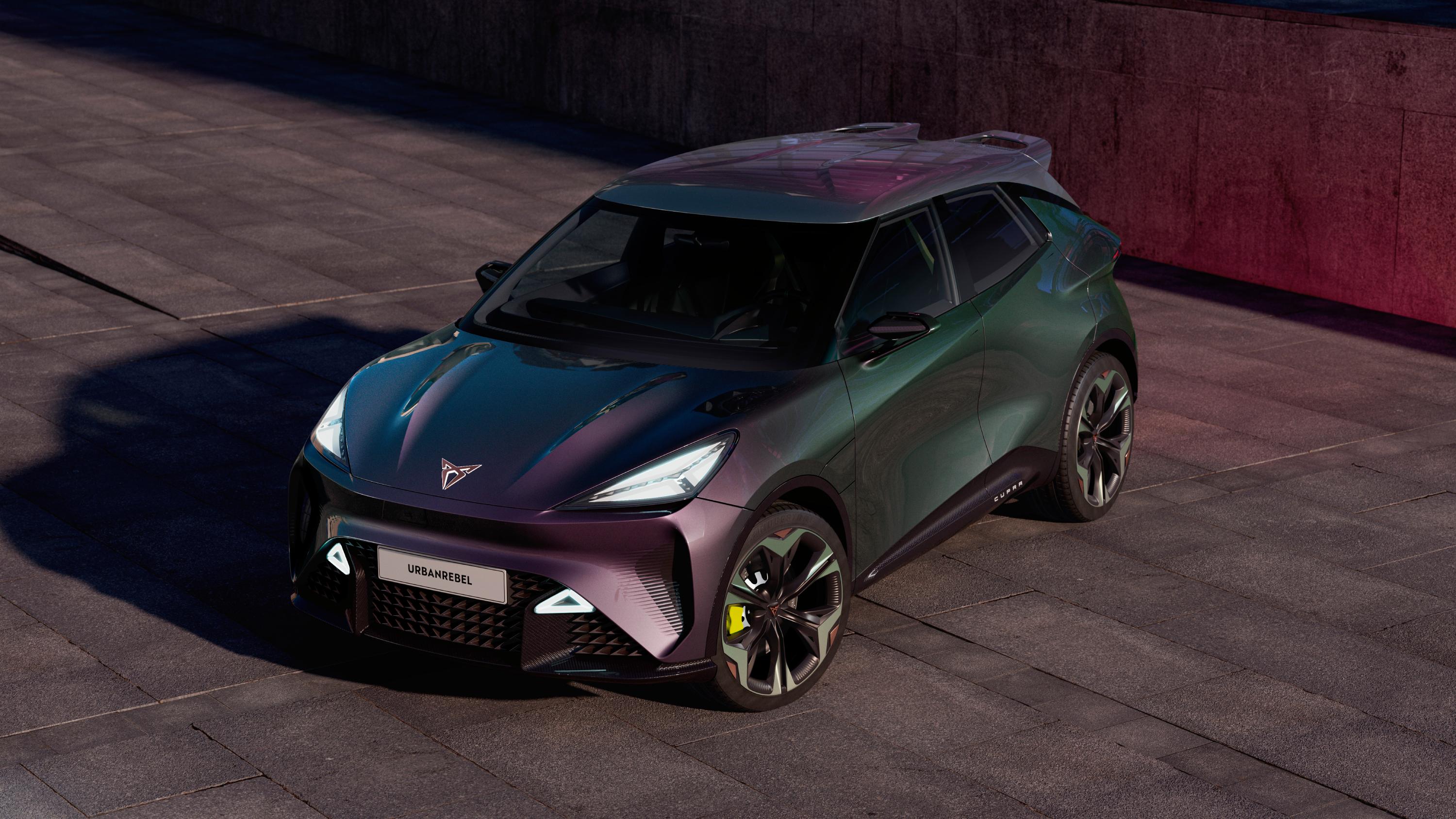
Jorge Díez oversees Spanish auto brands SEAT and Cupra. A long-time Wallpaper* reader, the designer has a full portfolio of future models on the boards. Born in Galicia, Díez studied industrial design, but retained a keen interest in fashion, graphics and transportation design. ‘For me, the car is an object that combines everything,’ he says, describing how he had to move to London’s RCA in order to explore all these different disciplines.

Jorge Díez Design Director of SEAT and Cupra
An early internship with Audi led to a scholarship for his second year and then a job at the German company, part of the VW Group. For Audi, he was instrumental in the design of models including the second-generation Audi TT and the first-generation Audi A7. Díez then moved to SEAT, also part of VW, where he led the Exterior Design Department at the beginning of the last decade.
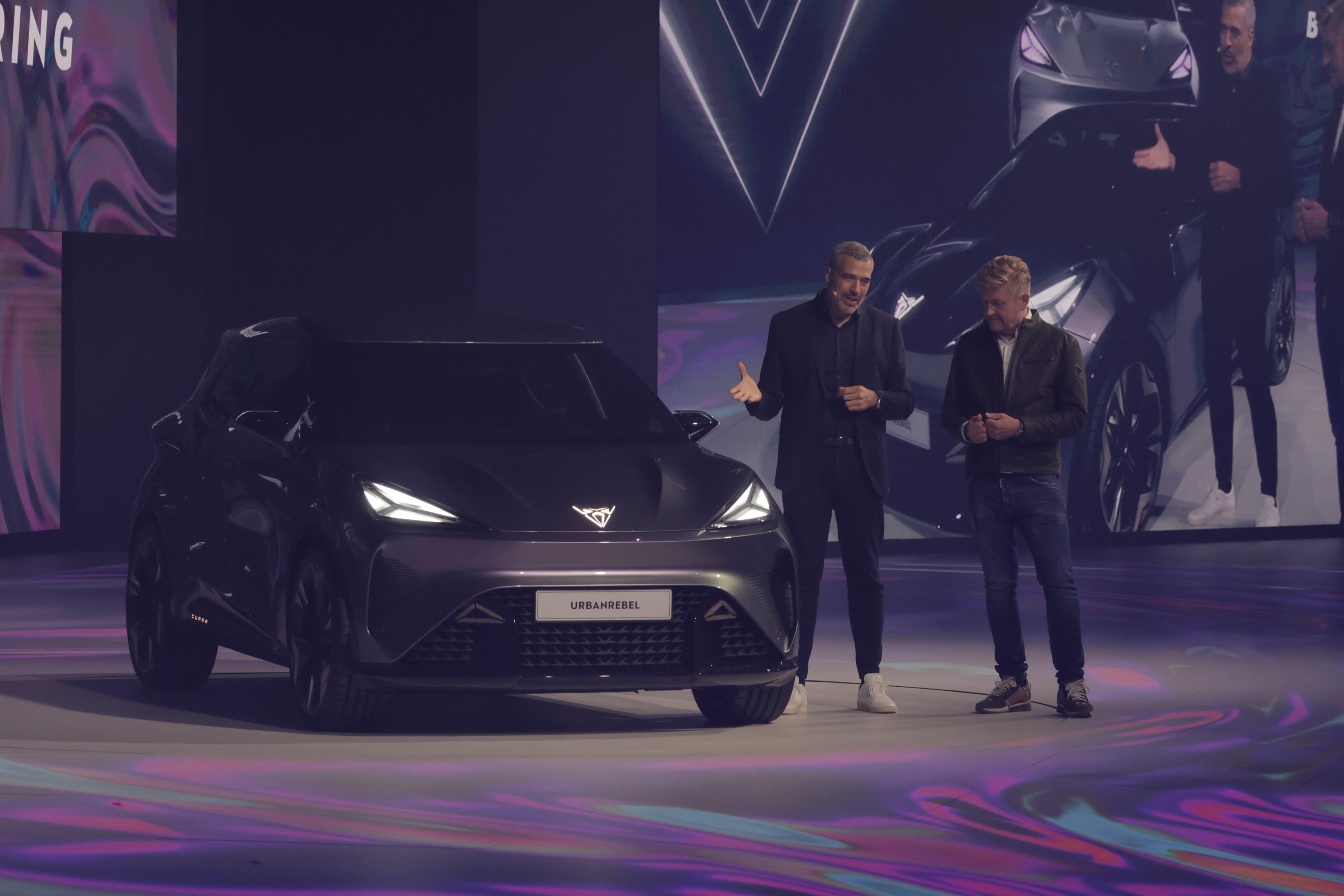
Díez showcases the Cupra UrbanRebel concept at the company’s Impulse event
Back at SEAT since 2019, Díez has been part of the team overseeing the creation of the new standalone Cupra brand. Previously, the ‘Cupra’ designation was applied to sportier versions of SEAT’s model range, but by transforming the sub-brand into its own identity, the VW Group has given itself another outlet for expressive design in the burgeoning EV market.
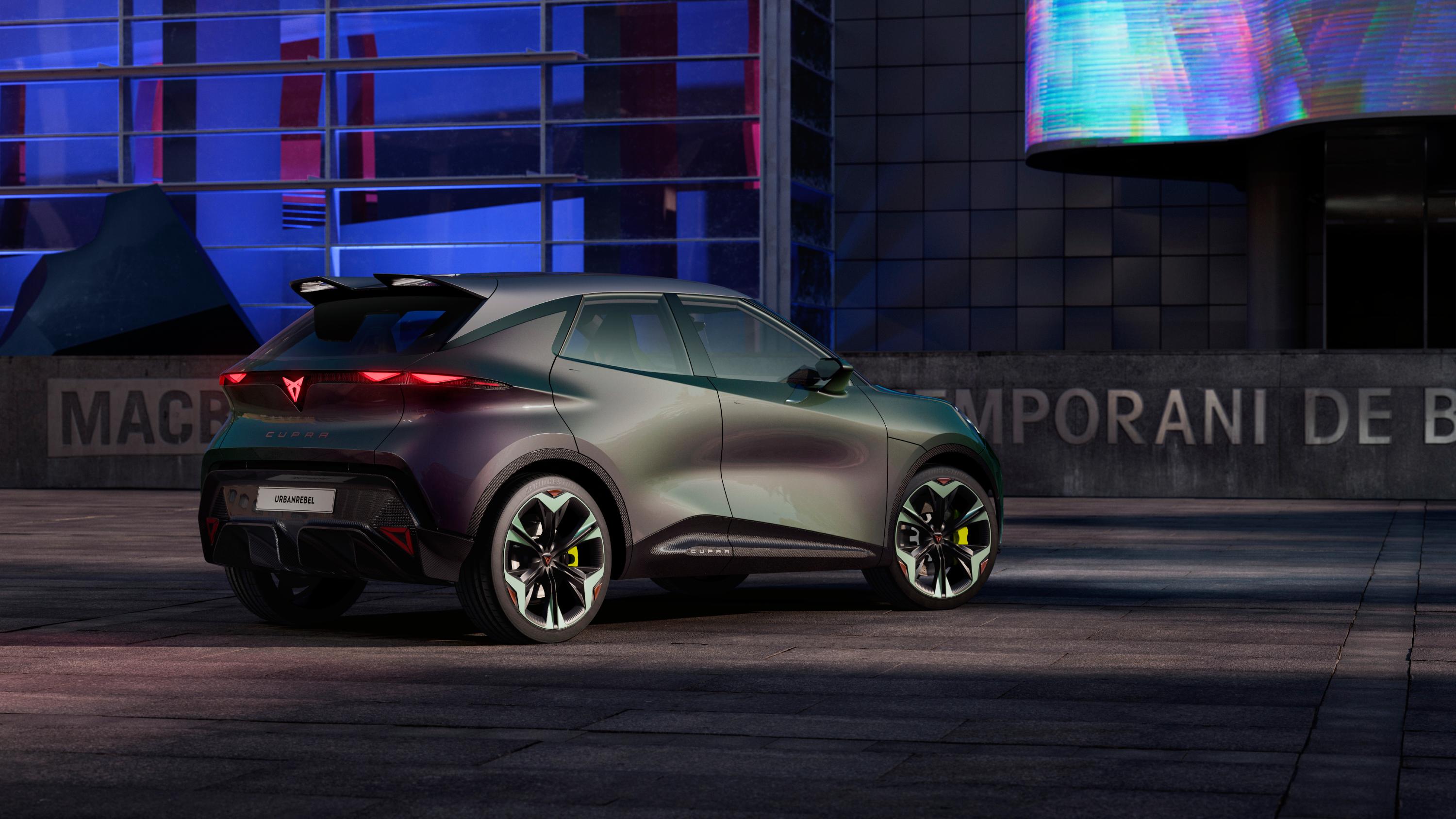
‘There hadn’t been a new brand in the European market for many years,’ says Díez. ‘It was a good opportunity to get into a higher market position.’ The origins of the SEAT brand lie in post-war Spain, when it was founded in 1950 as the country’s national motor manufacturer, owned in part by the Spanish government and Italian industrial stalwart Fiat. The first SEATs were re-badged Fiats, and it wasn’t until 1986 that the company was taken on by VW.
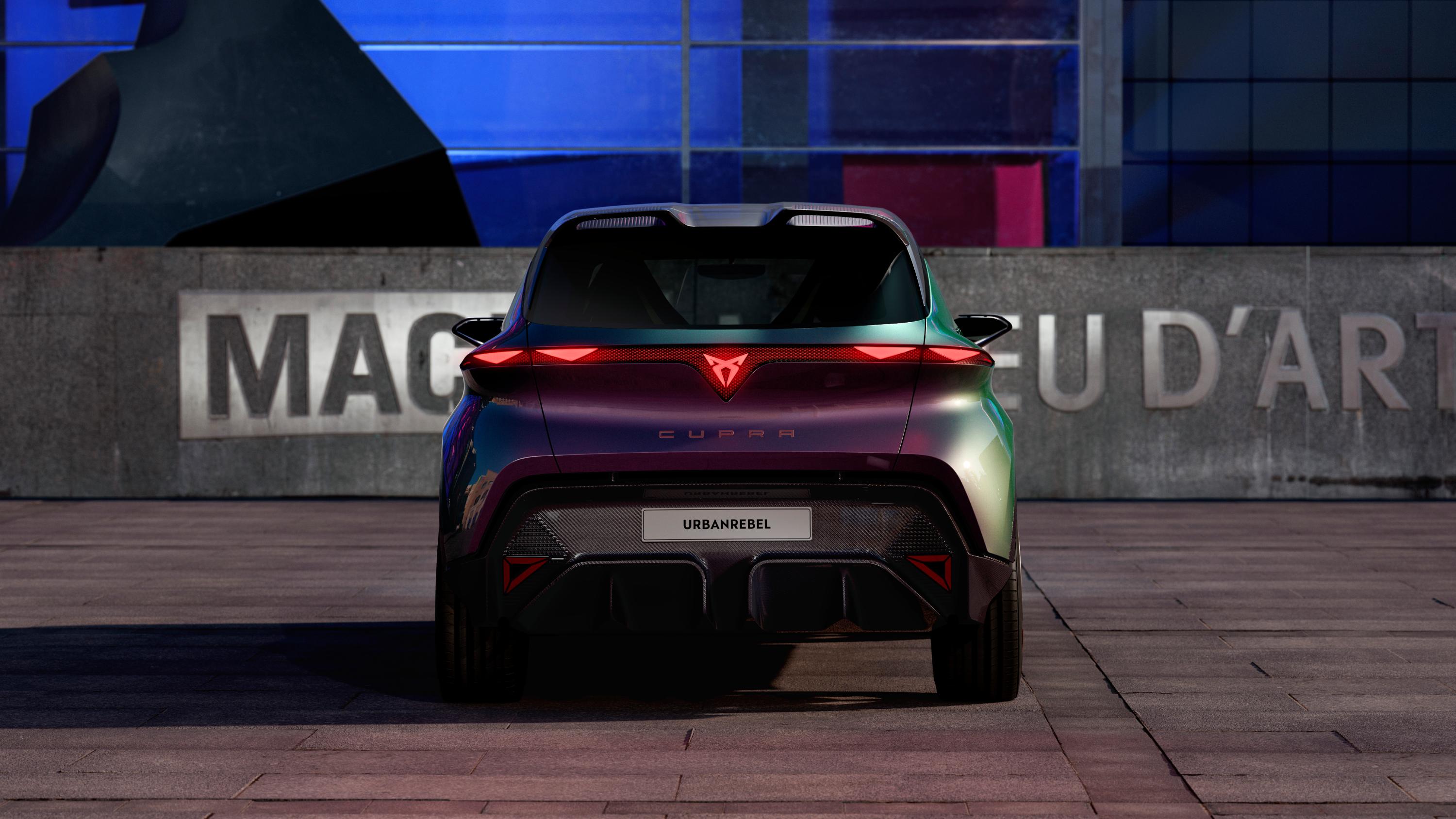
Cupra arrives unburdened by this heritage, which has left SEAT with a lingering image of a hot-blooded people’s car, the emotional counterpart to the strictly rational Volkswagen. There are national stereotypes at play here, of course, but when has a carmaker ever missed the opportunity to emphasise these?
For Díez, the new brand was ‘a white sheet of paper’, and he admits that from the outset, Cupra embodied ‘some element or spirit of the country, a bit more emotion’. ‘Cupra doesn’t have to be liked by everyone, he says, ‘but a few people will really love it.’
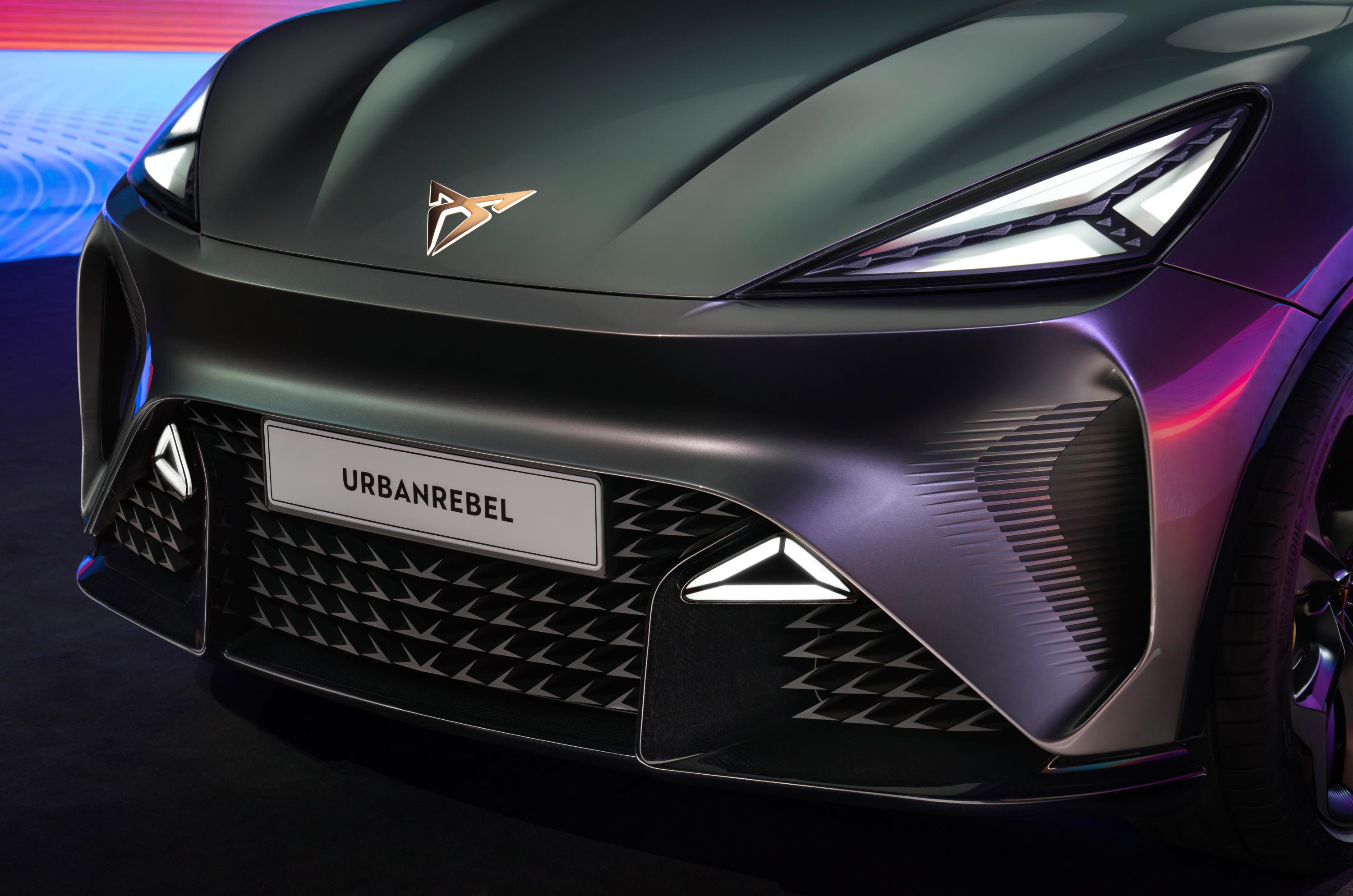
While the current range still includes ‘hot’ versions of SEAT’s Leon and Ateca, there are also two unique Cupra-badged cars, the compact Formentor crossover and the new Born, which takes VW’s ID3 platform and gives it slightly more of an edge.
Wallpaper* Newsletter
Receive our daily digest of inspiration, escapism and design stories from around the world direct to your inbox.
There have also been three key concept cars in the Cupra journey to date, the Tavascan electric SUV, the Terramar, a larger, plug-in hybrid SUV, and the Cupra UrbanRebel, a compact electric city car. The last is due in 2025, and the first two in 2024.
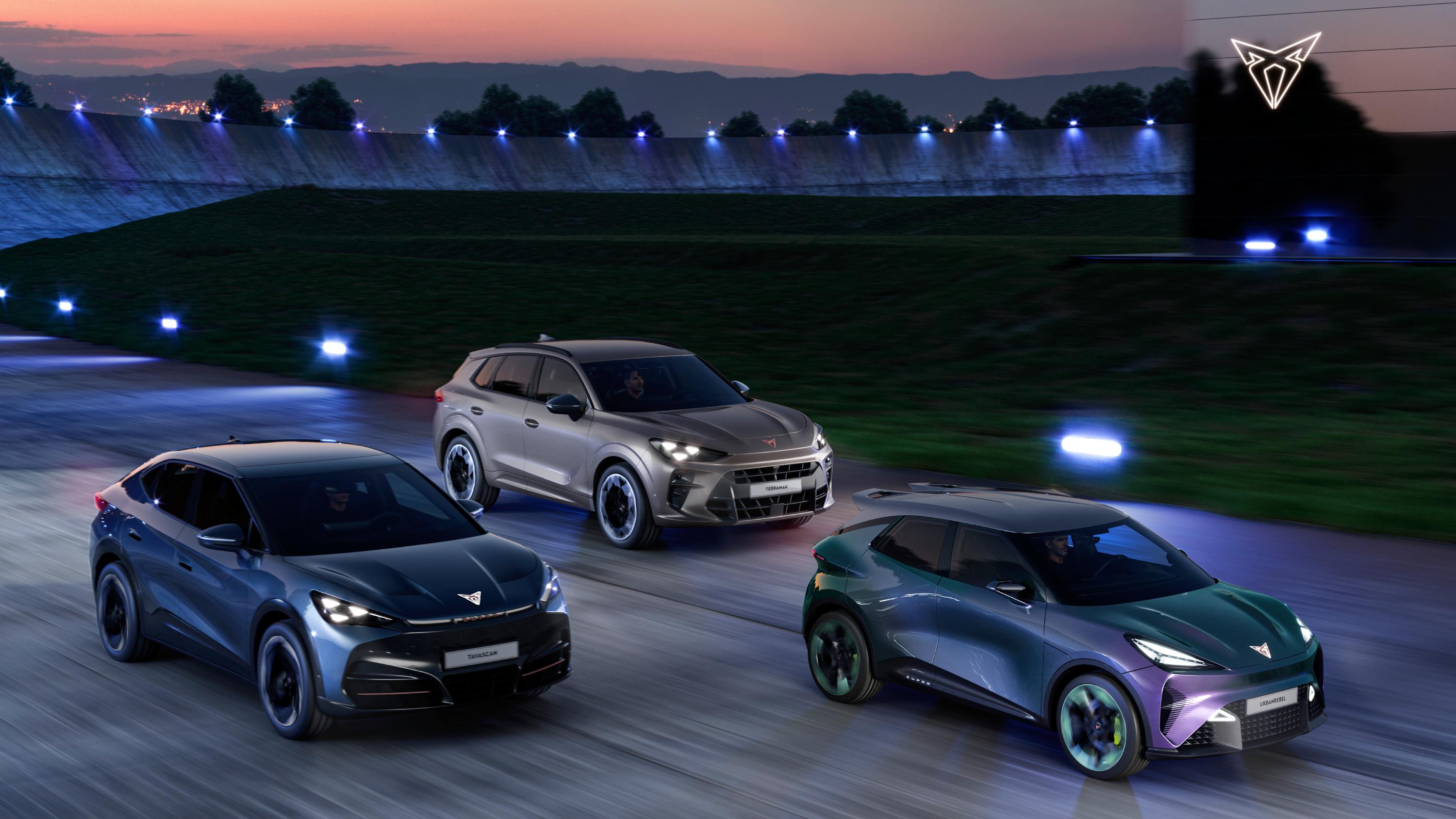
The forthcoming Cupra range: Tavascan, Terramar and UrbanRebel
One of Díez’s tasks has been to consolidate Cupra’s image. ‘We try to give each car its own personality,’ he says. ‘We would lose a bit of the effect if they all looked the same. Instead, they’re like brothers and sisters.’ Key elements, like the triangular graphic on the lights, front and rear, the slash-like creases in the bodywork, and the use of signature matte colours with copper detailing, all set the company apart and imbue a sophisticated, sporty image. In comparison to SEAT’s universal, Desigual- or Mango-like mass-market appeal, Cupra is technical sportswear.
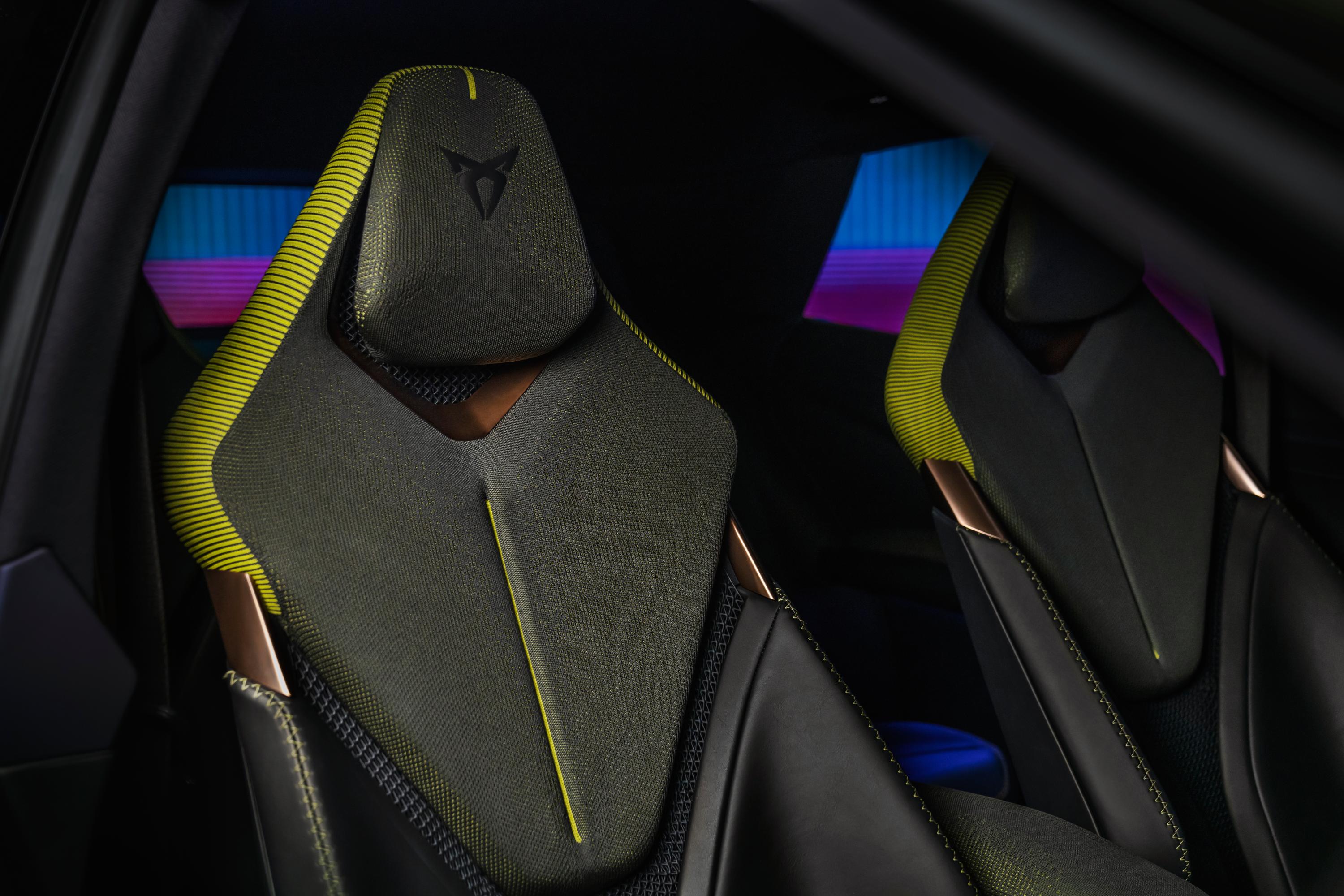
Cupra UrbanRebel's interior
These impressions matter in a market awash with change. ‘We believe that the cars should express that they’re fun to drive,’ says Díez, arguing that the shift to EVs is a big opportunity. ‘Some brands become a bit calmer when they go electric,’ he says. ‘For us, it was all about emotions. My ultimate target is to create a sense of desire.’
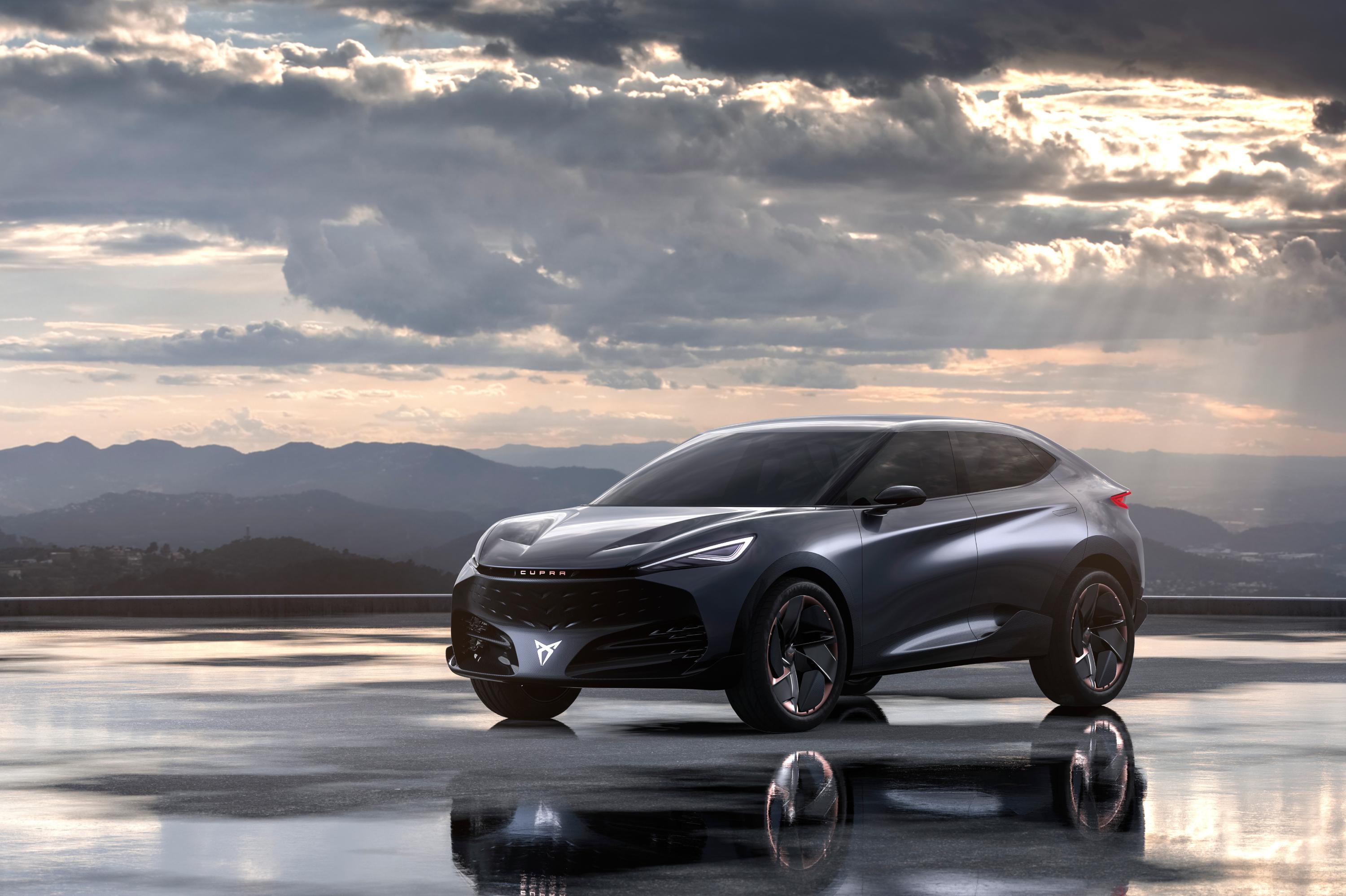
Cupra Tavascan Concept
For all the talk of emotive design, Díez is frank that being part of the VW Group gives a relatively small brand like Cupra a huge advantage. ‘Being in the group means we have many possibilities,’ he says. ‘However, how you use the platforms is up to each brand. And platforms are far more flexible now than in the past.’

Cupra Tavascan Concept
Cupra is also not about designing outlandish concept cars that can never reach production. These days, car companies have concept engineers who work alongside the design teams to ensure that design principles dovetail with manufacturing capabilities. ‘We have to explain the importance of every time, so it’s important we’re all on the same page,’ says Díez.
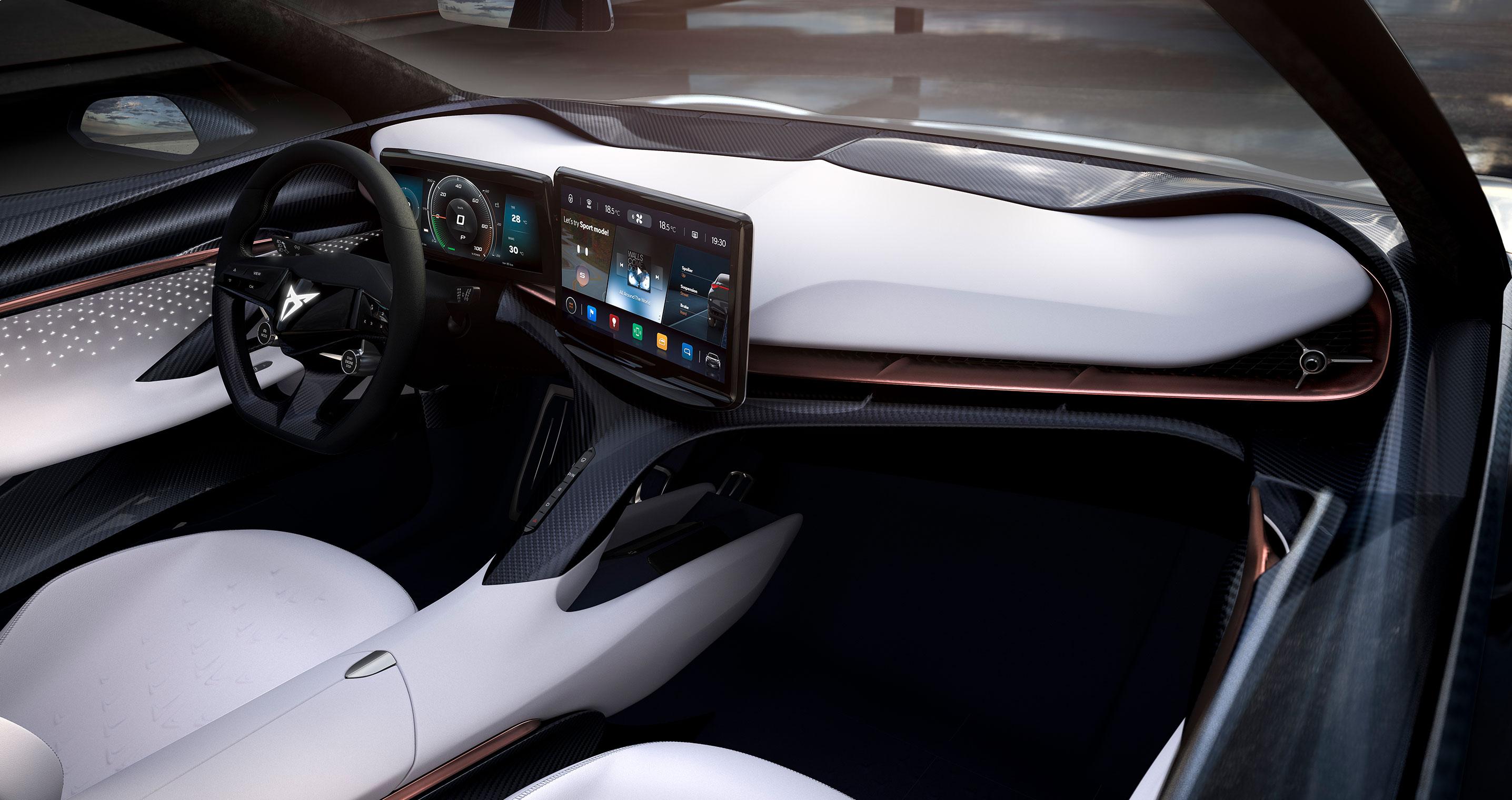
Cupra Tavascan Concept interior
Ultimately, Díez’s role is to sift, sort and identify the differing demands of future customers across three brands, SEAT, Cupra, and SEAT’s burgeoning electric personal mobility brand. ‘We’re looking at the desires and influences of people who are now teenagers,’ he says, pointing out quirks of future consumers – they’re very good with their hands, but not so agile with their feet. Design is a way into these different approaches.
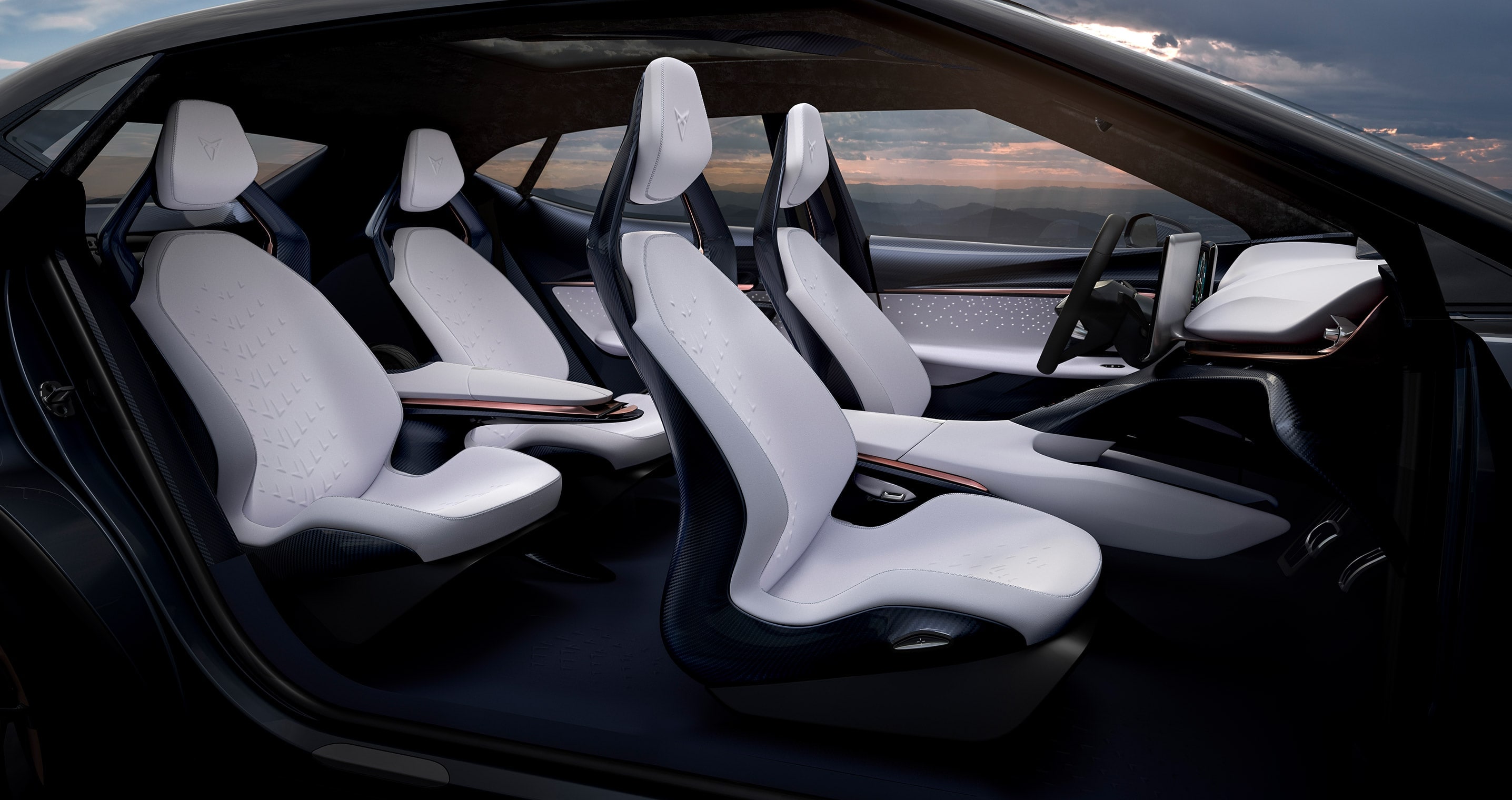
Cupra Tavascan Concept interior
‘It’s important to look outside the automotive world,’ he says. ‘We don’t use “classic” materials like wood or chrome, for example.’ Instead, the neutral matt colours and flashes of naked copper give Cupra its own identity, as does the overt use of recycled plastics and things like Neoprene on the seats. Díez and his team are exploring the potential of 3D-printing to add further personalisation, but the designer also stresses that modern LED lighting systems can also make each interior individual and unique.
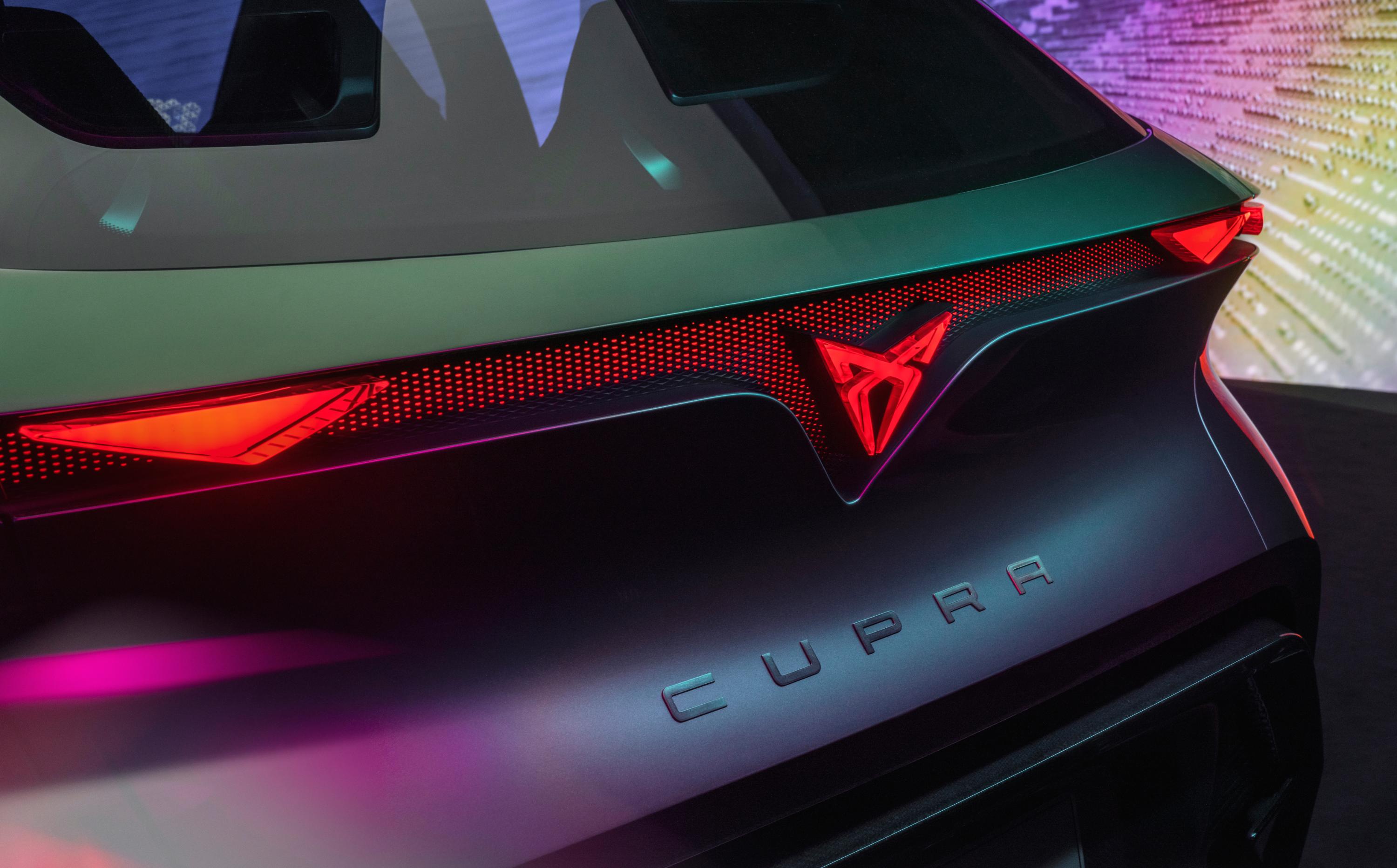
Cupra UrbanRebel
To emphasise the sporting potential, Cupra interiors tend to be more driver-focused (‘It’s a bit egoistic,’ admits the designer), while even elements like interior smell and sound are considered. ‘For us, a designer needs to be like a sponge, capable of absorbing everything and analysing it,’ Díez says. ‘Objects can talk without words.’
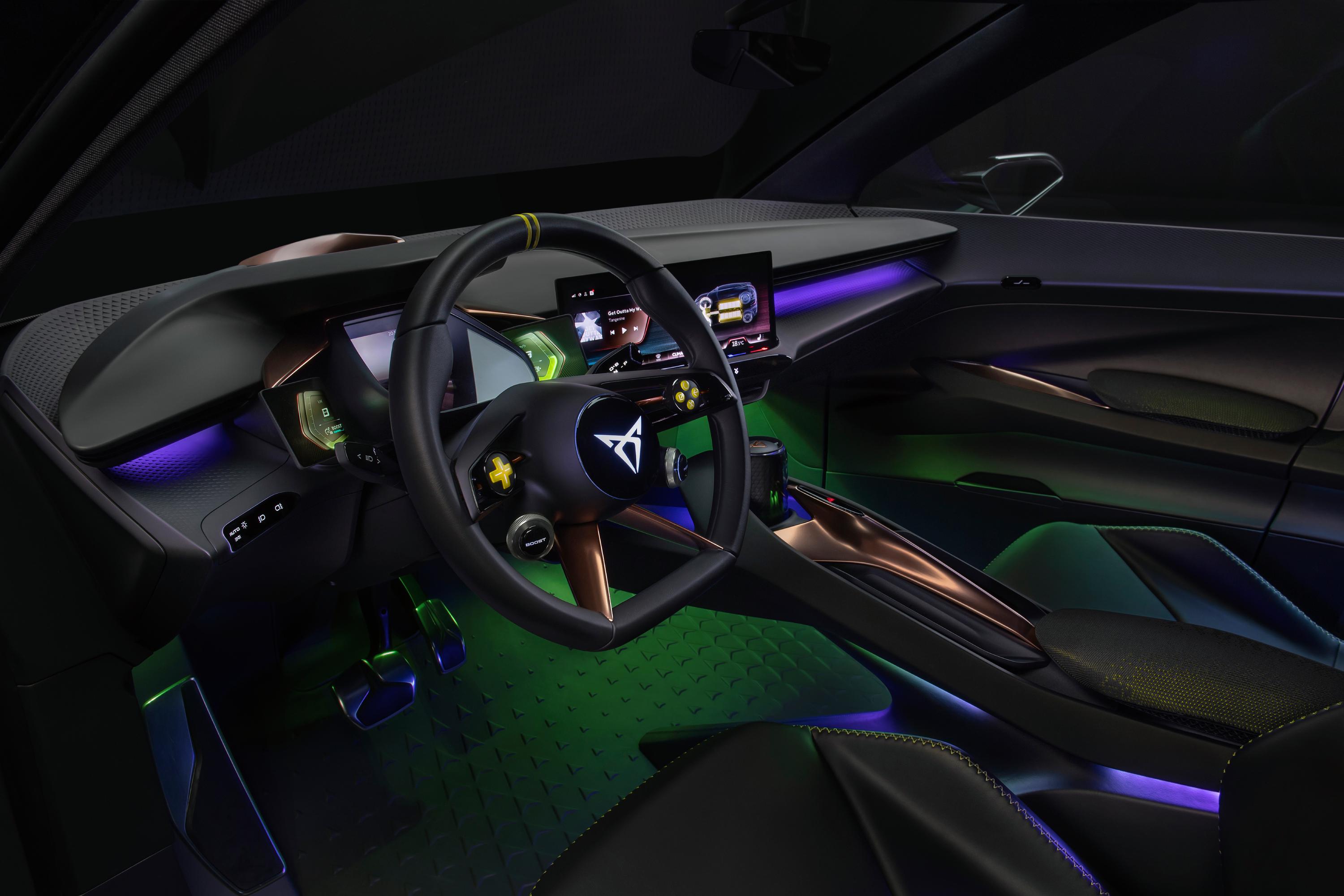
Cupra UrbanRebel interior
Ultimately, it’ll be brands like Cupra that give voice to the next generation’s response to the automobile. ‘Speed and acceleration once generated emotions,’ says Díez, ‘but we’re looking to trigger those feelings in a different way. The key is the use of technology. I think Cupra is well placed to explore all these different aspects.’
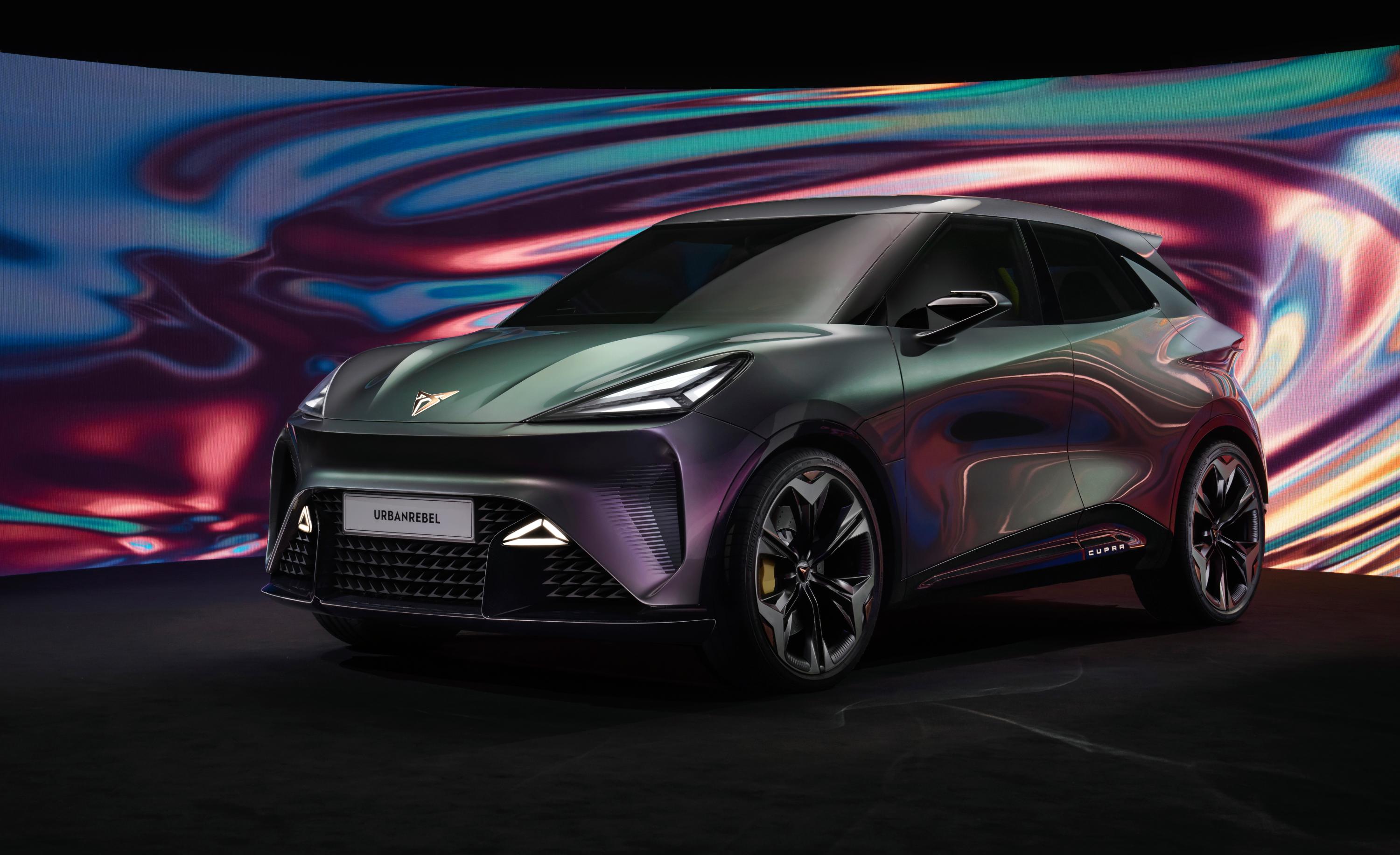
Cupra UrbanRebel
Jonathan Bell has written for Wallpaper* magazine since 1999, covering everything from architecture and transport design to books, tech and graphic design. He is now the magazine’s Transport and Technology Editor. Jonathan has written and edited 15 books, including Concept Car Design, 21st Century House, and The New Modern House. He is also the host of Wallpaper’s first podcast.
-
 Australian bathhouse ‘About Time’ bridges softness and brutalism
Australian bathhouse ‘About Time’ bridges softness and brutalism‘About Time’, an Australian bathhouse designed by Goss Studio, balances brutalist architecture and the softness of natural patina in a Japanese-inspired wellness hub
By Ellie Stathaki
-
 Marylebone restaurant Nina turns up the volume on Italian dining
Marylebone restaurant Nina turns up the volume on Italian diningAt Nina, don’t expect a view of the Amalfi Coast. Do expect pasta, leopard print and industrial chic
By Sofia de la Cruz
-
 Tour the wonderful homes of ‘Casa Mexicana’, an ode to residential architecture in Mexico
Tour the wonderful homes of ‘Casa Mexicana’, an ode to residential architecture in Mexico‘Casa Mexicana’ is a new book celebrating the country’s residential architecture, highlighting its influence across the world
By Ellie Stathaki
-
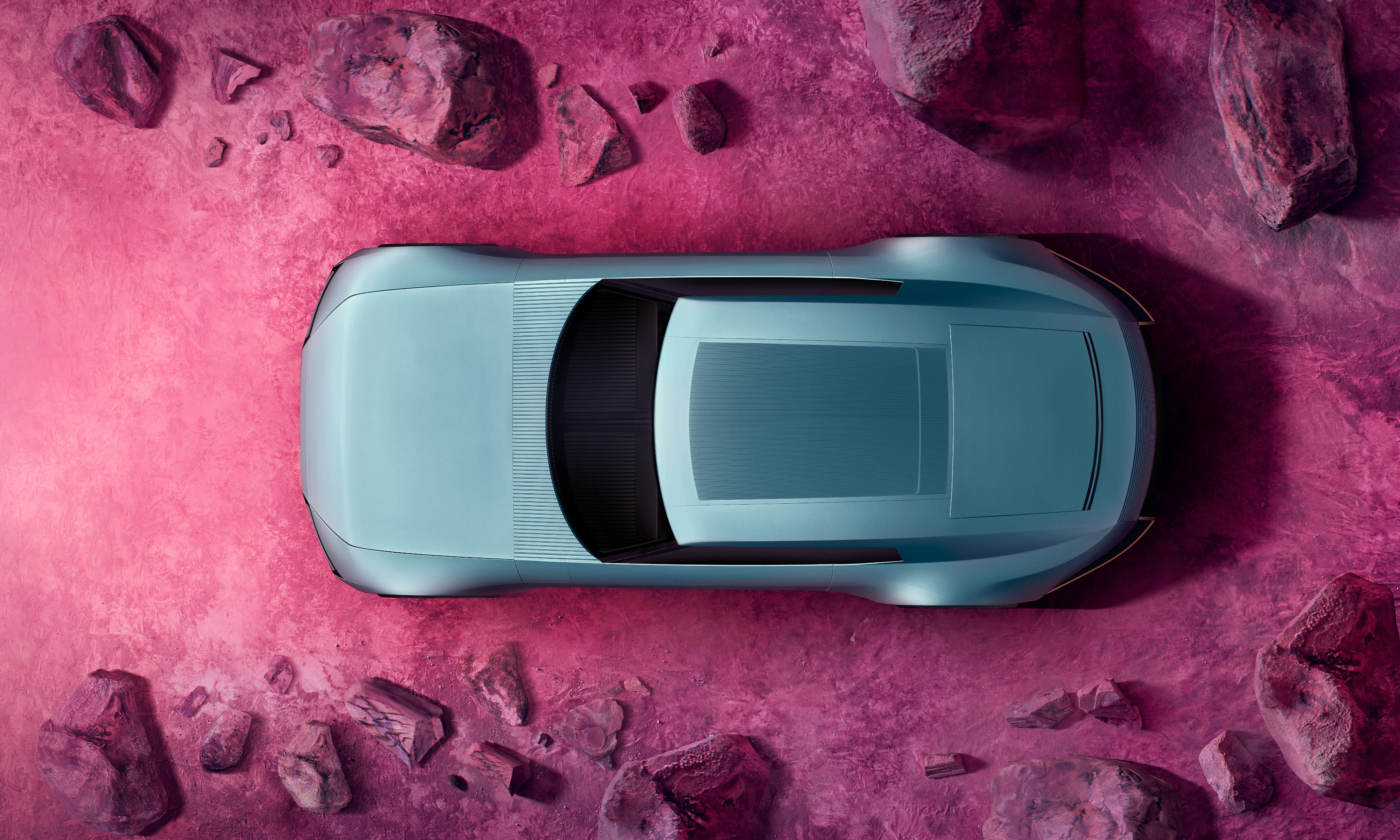 The top 10 concept cars of 2024, as selected by Wallpaper’s Transport Editor
The top 10 concept cars of 2024, as selected by Wallpaper’s Transport EditorWe round up our favourite forays into futuristic design with this collection of concepts and design studies showcasing the transport of tomorrow
By Jonathan Bell
-
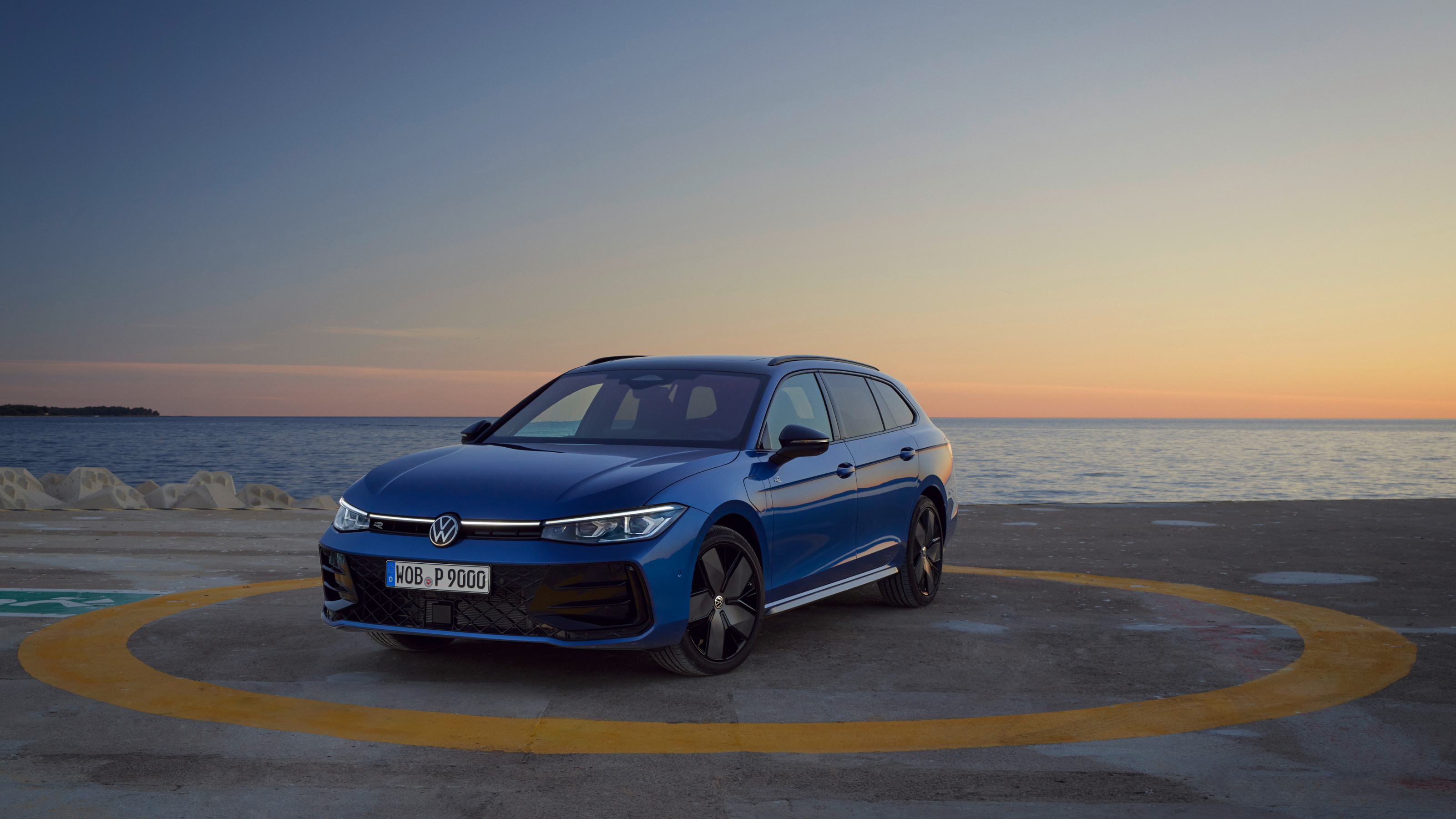 The Volkswagen Passat is a sober, straight edged estate car that feels increasingly out of time
The Volkswagen Passat is a sober, straight edged estate car that feels increasingly out of timeWhy would anyone pass on a Passat? Volkswagen’s big load lugger proves that the old ideas are still the best
By Jonathan Bell
-
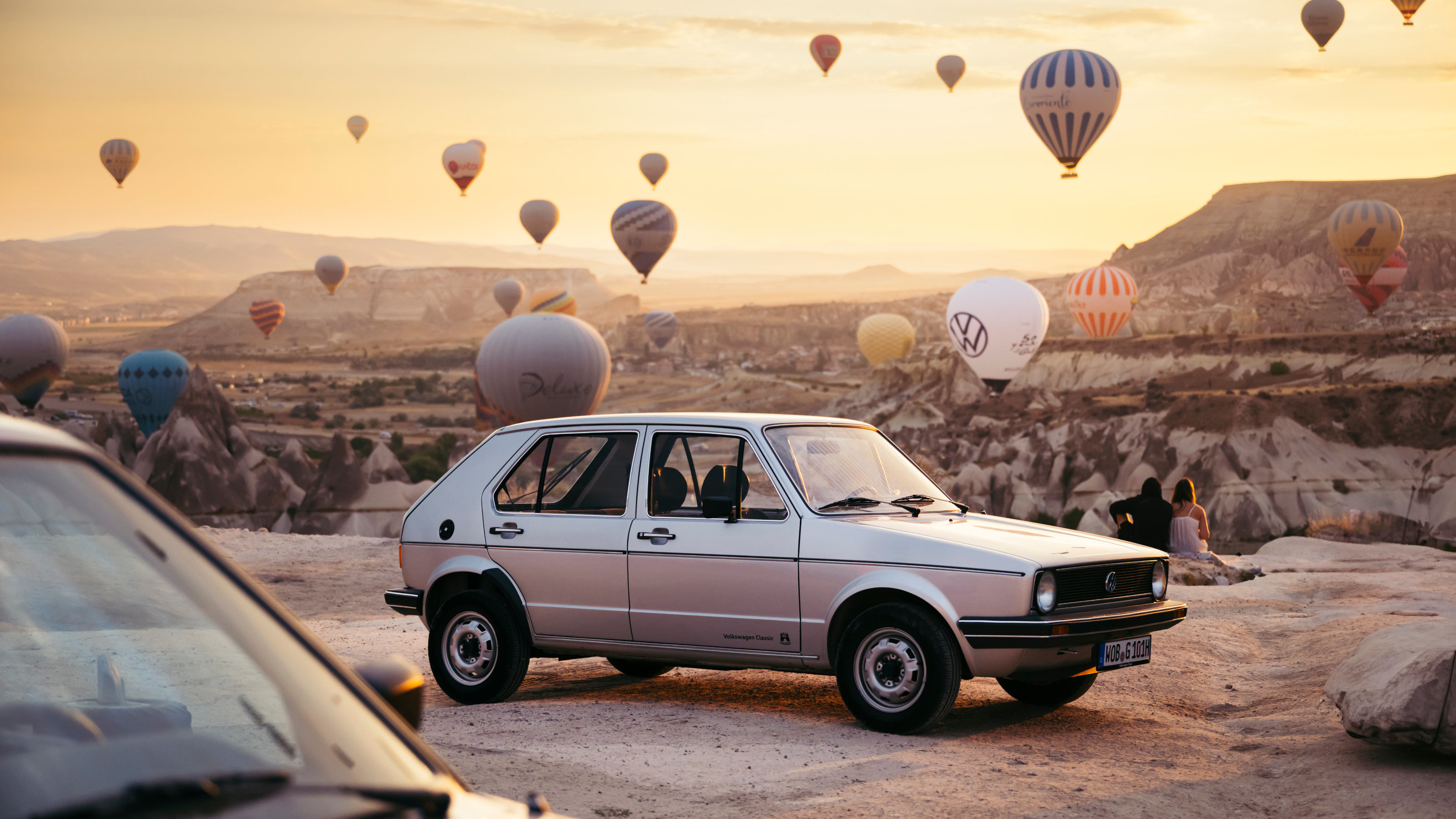 Volkswagen celebrates 50 years of the Golf, its most famous modern model, with a flight of fancy
Volkswagen celebrates 50 years of the Golf, its most famous modern model, with a flight of fancyWallpaper* travelled to eastern Turkey in search of the perfect backdrop to mark 50 years and eight generations of the evergreen VW Golf
By Adam Hay-Nicholls
-
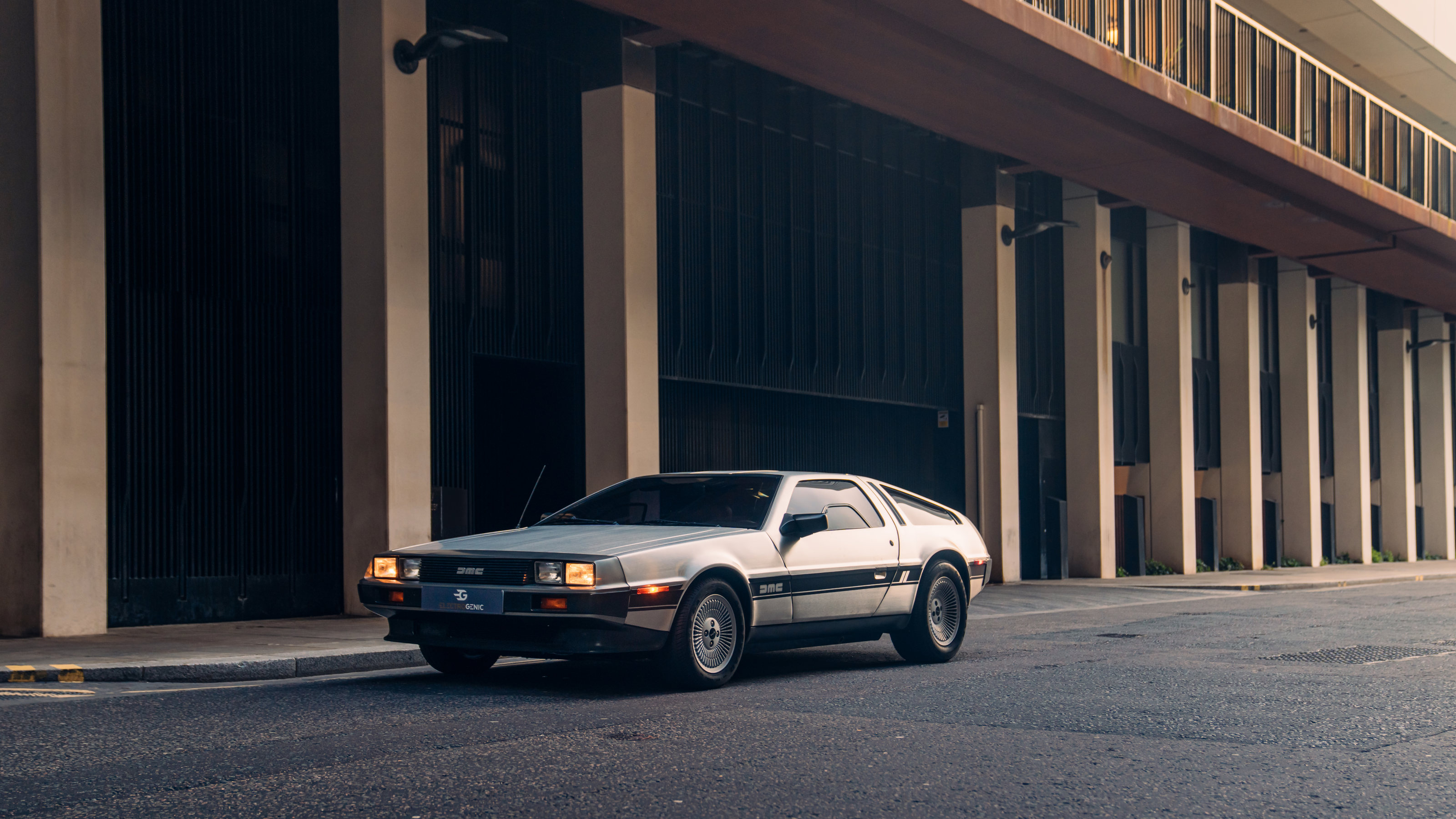 We sample the world’s first all-electric DeLorean, a stainless steel marvel for the modern age
We sample the world’s first all-electric DeLorean, a stainless steel marvel for the modern ageElectrogenic brings its brilliance with batteries and motors to bear on the iconic DeLorean DMC-12, giving this classic design the futuristic feel it deserves
By Jonathan Bell
-
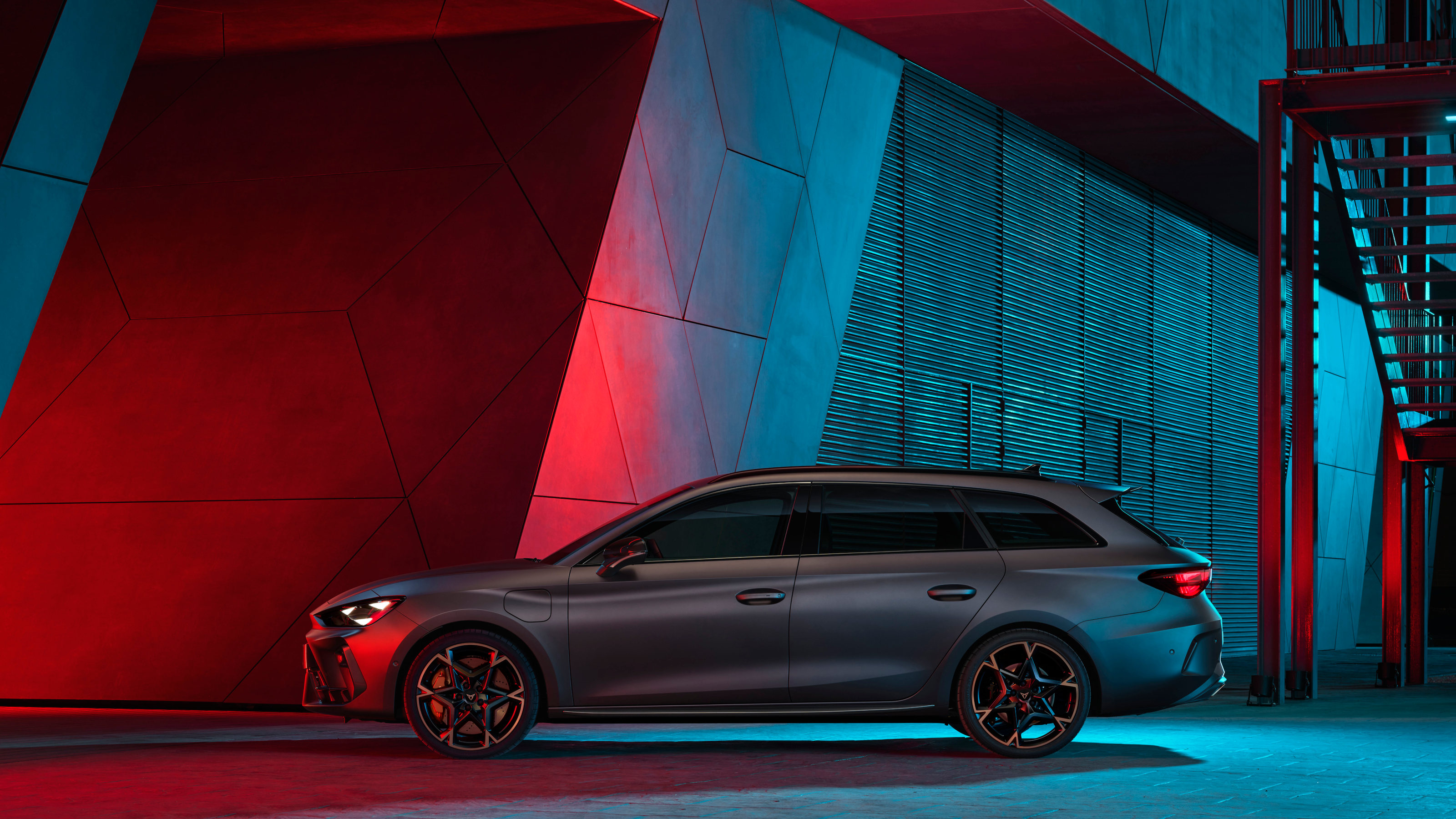 A couple of Cupras: we explore the Spanish brand’s Leon and Ateca models
A couple of Cupras: we explore the Spanish brand’s Leon and Ateca modelsCan the marque’s mainstay models, the Cupra Leon and Ateca go head-to-head with the growing number of all-electric rivals?
By Jonathan Bell
-
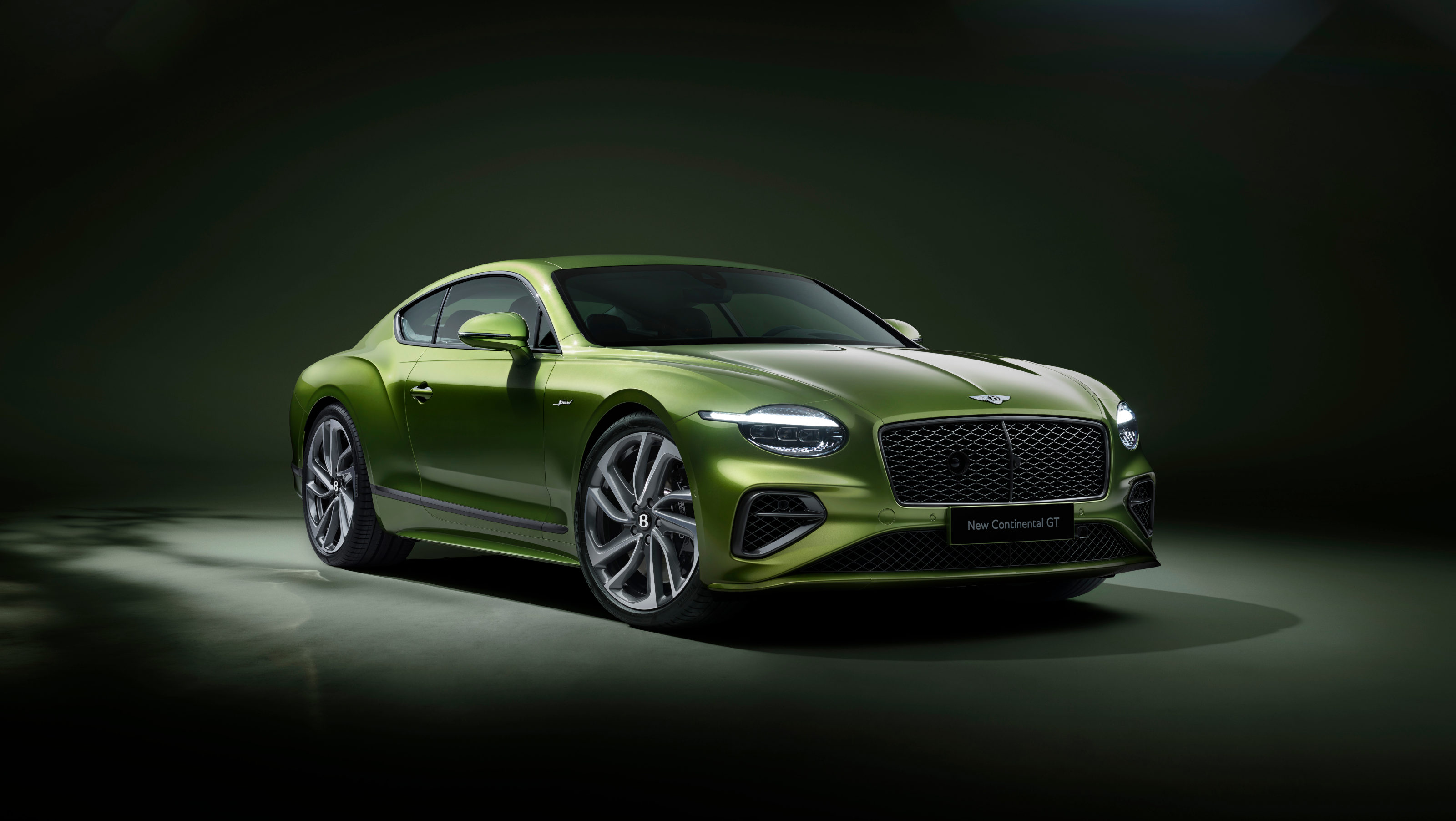 Bentley rolls out the latest version of its majestic grand tourer, the Continental GT Speed
Bentley rolls out the latest version of its majestic grand tourer, the Continental GT SpeedAvailable as both coupé and convertible, the fourth generation Bentley Continental GT Speed harnesses hybrid power to become a record breaker for the brand
By Jonathan Bell
-
 Fiat Grande Panda first look: will retro-seeking lightning strike twice?
Fiat Grande Panda first look: will retro-seeking lightning strike twice?This is the new Fiat Grande Panda, a compact hybrid and electric car that brings delightful design back to a well-loved model
By Jonathan Bell
-
 New Volkswagen California is a hybridised camper van that has it all
New Volkswagen California is a hybridised camper van that has it allThe Volkswagen New California camper van is here, the latest update to VW’s evergreen classic, bringing a larger platform, more flexibility and hybrid power for the first time
By Jonathan Bell